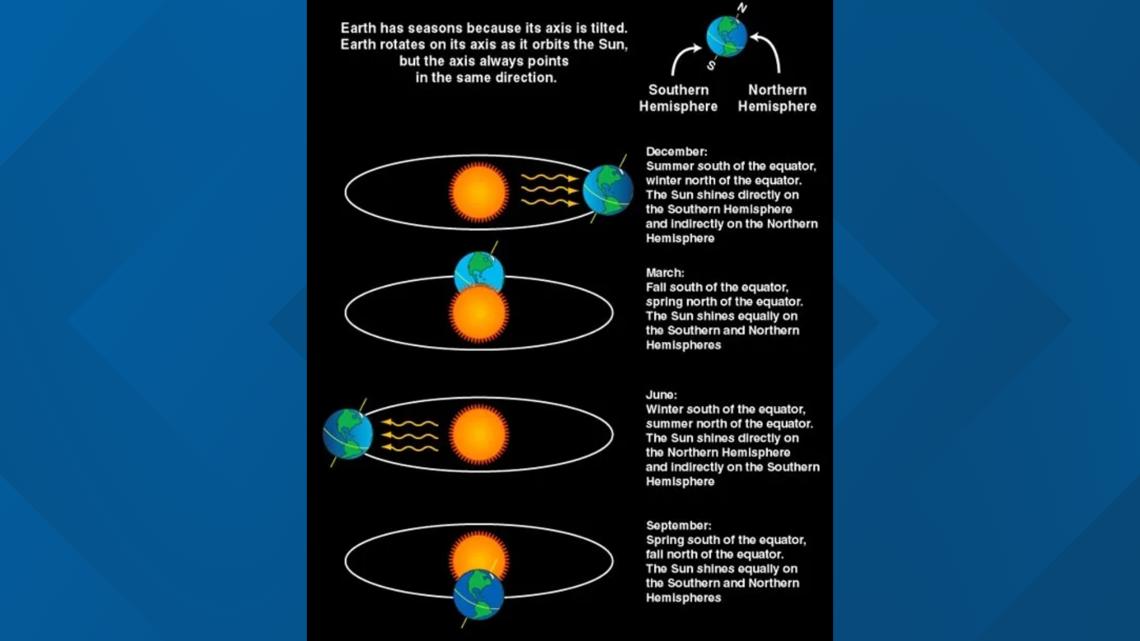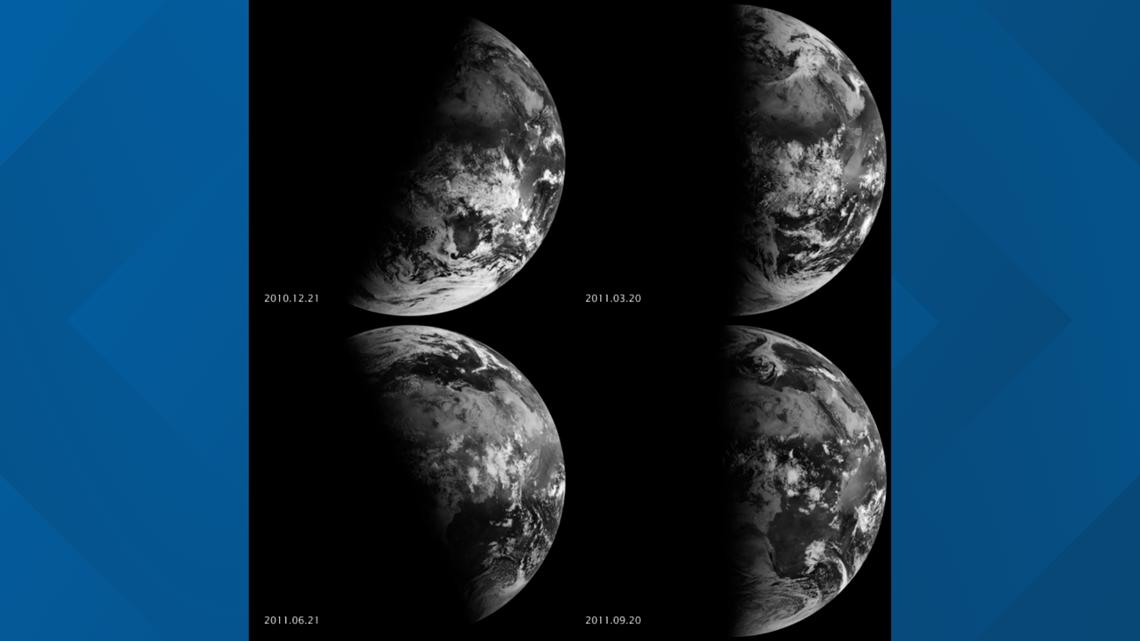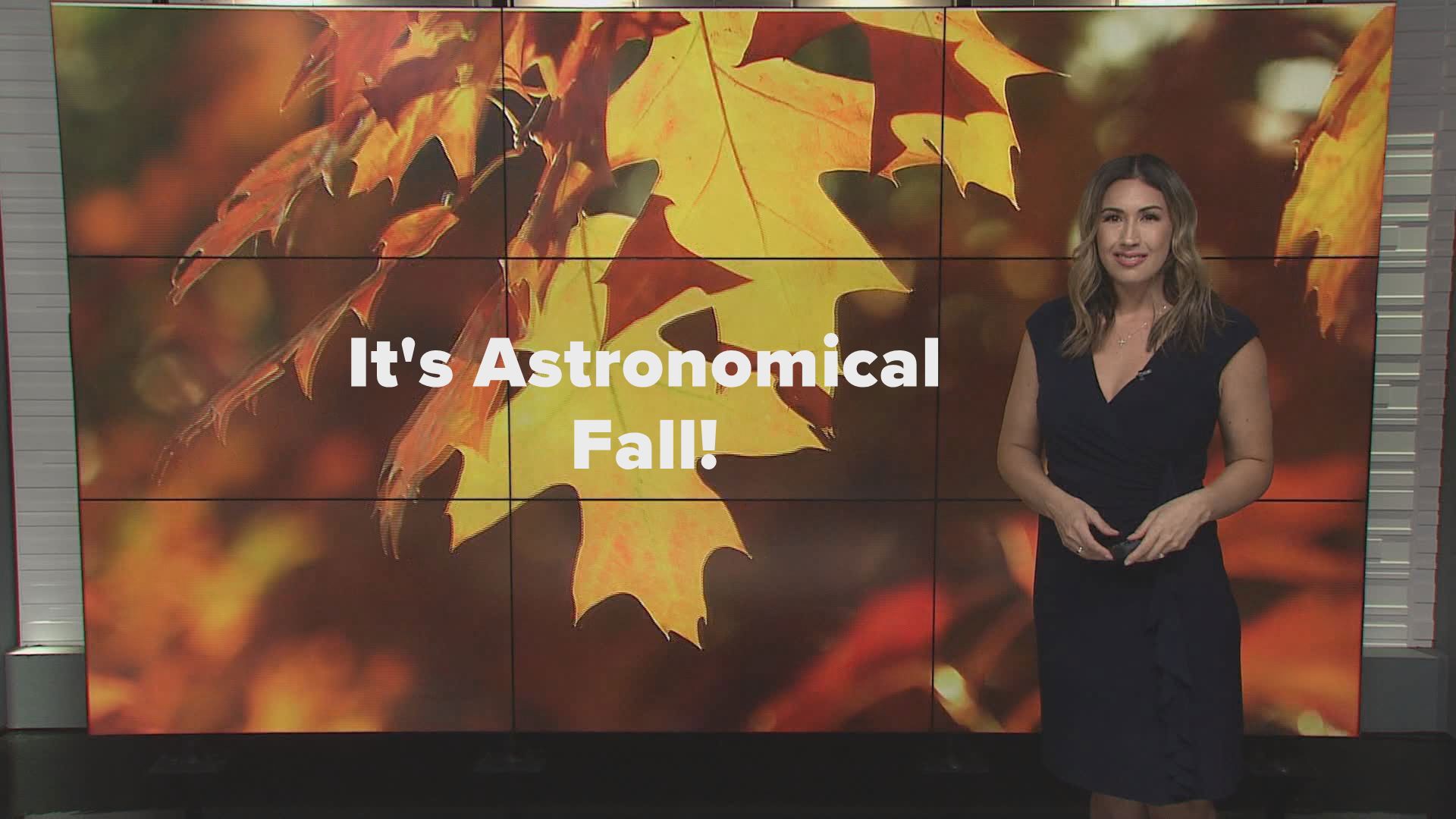SACRAMENTO, Calif. — As of 5:43 a.m. Pacific Standard Time on Sunday, Sept. 22, it's fall in the Northern Hemisphere.
That's when the equinox occurred, marking the astronomical change of seasons. Astronomical fall depends on the tilt of the Earth, while meteorological fall is based on the calendar and average temperatures.
Earth rotates on an axis that is angled at 23.5°. Mainly in June, July and August, the Northern Hemisphere is angled closer to the sun, and the Southern Hemisphere is angled away. That's why it's summer for us and winter for folks south of the equator.
The opposite is true in mainly December, January and February, when the Northern Hemisphere is angled away from the sun (winter) and the Southern Hemisphere towards the sun (summer).


This is most pronounced on two specific moments, known as the solstices. For the Northern Hemisphere, the June solstice and the December solstice mark the changing of seasons to summer and winter, respectively.
In March and September, however, the angle of the Earth's tilt points both the Northern and Southern Hemispheres nearly evenly towards the sun. This results in nearly equal amounts of daylight for folks across both hemispheres. This is why these days are called the equinoxes, meaning "equal night" in Latin.
The angle of the Earth facing the sun can be seen from satellite. On the equinoxes the shadow/sun line — known as the terminator — is straight up and down, evidence of the Earth facing the sun evenly. On the solstices, the shadow is angled, showing how the hemispheres receive unequal amounts of daylight.


That is why at 5:43 a.m. Pacific Standard Time on Sunday, Sept. 22, it's fall in the Northern Hemisphere.
Astronomical fall depends on the tilt of the Earth, and meteorological fall is based on average temperatures and the calendar.
In the Northern Hemisphere, September, October and November are the months when average temperatures begin to drop and the weather patterns change significantly from the summer setups. By organizing meteorological fall into neat and even three-months periods, it makes data and record keeping easy.
But now that we've hit the equinox, we're into the autumn season no matter how you measure it — astronomically or meteorologically.
2024 ASTRONOMICAL SEASONS:
SPRING: March 19 - June 20
SUMMER: June 20 - September 22
FALL: September 22 - December 21
WINTER: December 21 - March 20, 2025
2024 METEOROLOGICAL SEASONS:
SPRING: March 1 - May 31
SUMMER: June 1 - August 31
FALL: September 1 - November 30
WINTER: December 1 - February 28, 2025
WATCH MORE | California Weather: The return of fall























